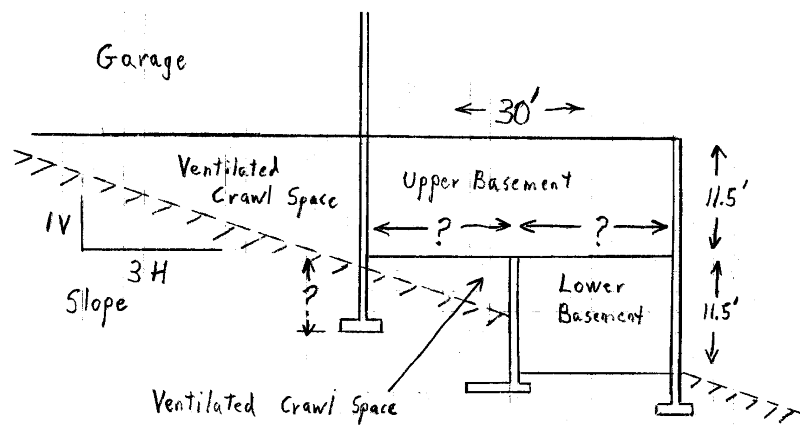CANeng11
Civil/Environmental
- Feb 18, 2015
- 114
We are currently looking at the engineering for a house from a designer that is built on a steep slope with essentially a 2 leveled walkout basement (see my rough sketch attached). The house is roughly 45 feet wide (into the page) and they are also showing an open to below area in the middle third of the wood diaphragm above the lower basement level.
Some of the issues we see with how it is currently designed include:
- stepping the footings up from the lower basement to the upper basement;
- the upper basement footings potentially being built on fill;
- the large loads imposed on the lower foundation wall from the surcharge of the upper footing, as well as the slab attached to the bottom - of the upper wall pushing on the top of the lower wall;
- potentially issues with the felxible diaphragm with the open to below.
I'm wondering if anyone had suggestions on the type of design we should be looking at here. Does the lower basement foundation wall need to be moved further than 10 feet away from the upper? We have been going around in circles a bit on the best way to proceed on this one and are looking for others opinions on the best path forward.
Some of the issues we see with how it is currently designed include:
- stepping the footings up from the lower basement to the upper basement;
- the upper basement footings potentially being built on fill;
- the large loads imposed on the lower foundation wall from the surcharge of the upper footing, as well as the slab attached to the bottom - of the upper wall pushing on the top of the lower wall;
- potentially issues with the felxible diaphragm with the open to below.
I'm wondering if anyone had suggestions on the type of design we should be looking at here. Does the lower basement foundation wall need to be moved further than 10 feet away from the upper? We have been going around in circles a bit on the best way to proceed on this one and are looking for others opinions on the best path forward.


![[idea] [idea] [idea]](/data/assets/smilies/idea.gif)